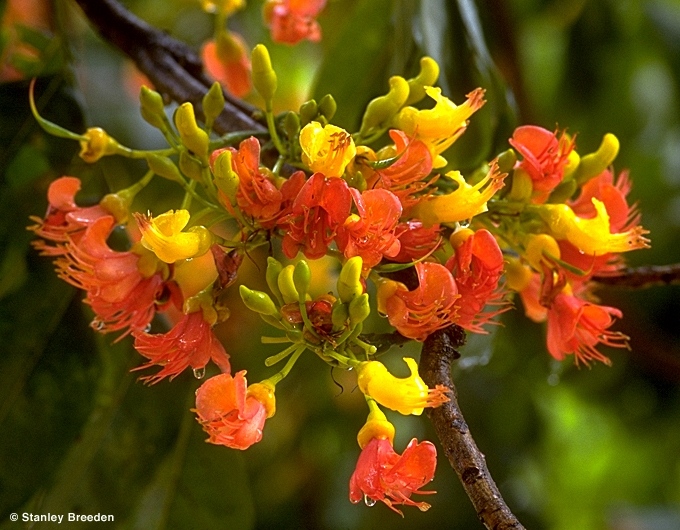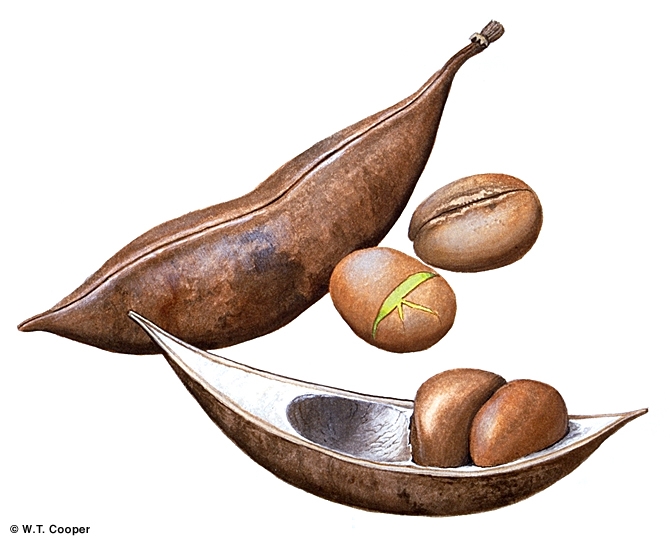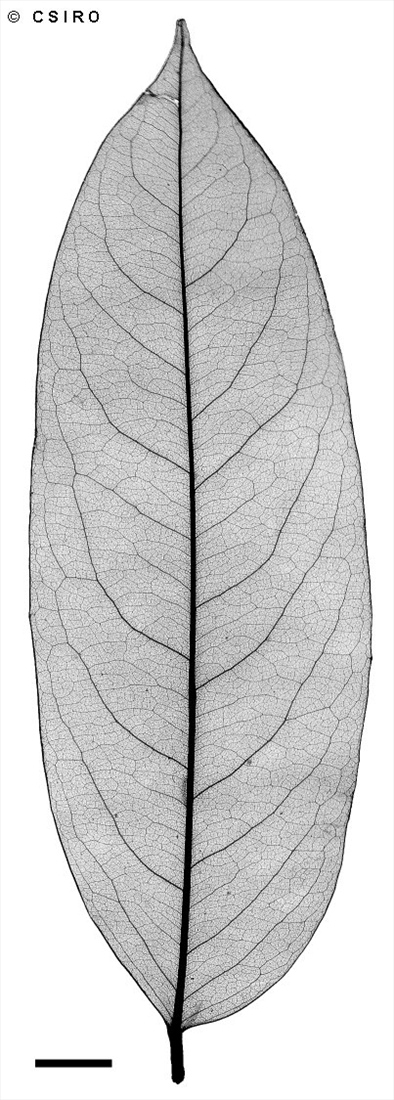Australian Tropical Rainforest Plants - Online edition
Castanospermum australe A.Cunn. ex Mudie






Mudie, R. (1829) The Picture of Australia : 149. Type: Lectotype: Queensland. Moreton Bay, 1828, Cunningham (BM; ?iso K, OXF).
Bean, Moreton Bay; Moreton Bay Chestnut; Beantree; Black Bean; Bean, Black; Moreton Bay Bean
Blaze odour fairly conspicuous, resembling cucumber (Cucumis sativus) or occasionally pumpkin (Cucurbita pepo).
Freshly broken twigs have an odour like that of the blaze. Lenticels numerous and conspicuous on the twigs. Crushed leaves have an odour like that of freshly cut grass. Leaf blades about 7-20 x 3-5 cm.
Occurs in CYP, NEQ, CEQ and southwards to north eastern New South Wales. Altitudinal range in CYP and NEQ from near sea level to 800 m. Grows in well developed rain forest but often found in gallery forest along creeks and rivers. Also occurs in New Caledonia and Vanuatu.
This species often produces large fruit crops and the pods litter the ground and it is possible to collect large quantities of seeds. Children often use the pods or each valve of the pods as model boats while other children use the seeds as missiles which they throw at each other in Black Bean fights.
The seeds should be regarded as poisonous and not eaten as there are numerous well documented cases of poisoning. Aborigines have been reported as eating the seeds but only after careful preparation involving leaching in water and roasting. Everist (1974).
Food plant for the larval stages of the Pencilled Blue Butterfly. Common & Waterhouse (1981).
A very strong tree that will withstand strong wind. Used extensively as a street tree and in parks and large gardens. The showy flowers attract lorikeets which sometimes become intoxicated.
A useful carving timber.
Timber has high electrical insulating properties. Swain (1928).
Timber strong and durable, formerly very popular for fence posts.
Produces a useful cabinet timber and general purpose timber. The timber is decorative and durable but may be subject to collapse in the drying process.
Wood specific gravity 0.75. Cause et al. (1989).
When dressing and sanding furniture made from this species, suitable precautions should be taken and safety gear worn as the dust produced can cause problems in the operator's respiratory system.





